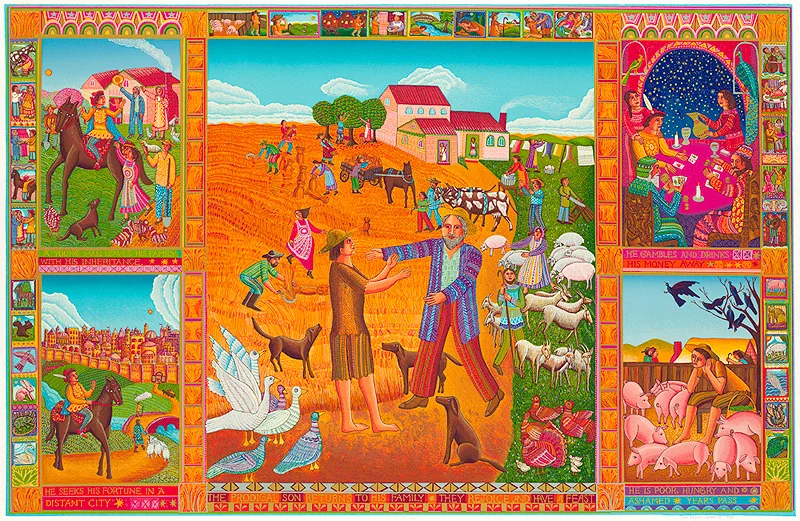Artist’s Notes
The parable of the Prodigal Son has inspired many artists, musicians, writers, and poets. The story has many levels for interpretation and insight into the human experience, especially family life and forgiveness. Rembrandt chose to use this image for his last completed painting Return of the Prodigal Son in 1669 (which he based on a drawing he created for his eponymous etching from 1636). Robert Wallace observed in his book The World of Rembrandt, “In the artist’s view the scripture was the beginning chapter of a narrative of Man’s situation, a dramatic and continuing narrative in which Rembrandt saw himself and his contemporaries as vital participants.” Like Rembrandt, this story has inspired me throughout my career.
In 1984, I made the PRODIGAL SON serigraph in collaboration with Jim Butterfield of Aurora Serigraphics. It was a complex work, with miniatures bordering a central group of larger images.
In 18th and 19th century Sweden, especially in the small rural villages, narrative painting was popular. Stories were painted on banners, or directly on the walls or cornices of rooms. Often Biblical scenes were depicted, with the figures imitative of the German woodblock prints found in Bibles of the period. The Prodigal Son was a popular theme that resonated with many Swedes at this time of mass emigration to North America. Tradition dictated that farms would be divided among sons; for smaller farms, dividing the land would make farming economically nonviable. The solution many families found was for one son to emigrate. Contrary to the parable, many of those who left (like my father did) would never see their families again.




